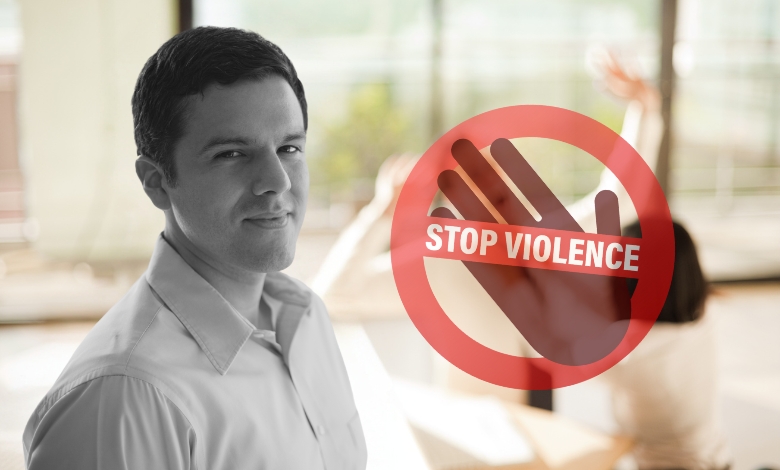A comprehensive guide to understanding what is workplace violence, its types, causes, and prevention strategies for a safe work environment.
Having worked in the corporate world for more than twenty years, I have faced many difficulties at work, but none as disturbing as cases of workplace violence.
Early in my career, I oversaw teams in a mid-sized tech company. I still clearly recall the day a disagreement between two coworkers turned into a physical fight. It was a startling realization of how rapidly a friendly workplace may become unfriendly.
This encounter sparked a strong passion in knowledge of and solutions for workplace violence. Years of research, seminars, and expert consultations have helped me to fully grasp this important problem.
Today, I want to impart this information not only to recognize the several kinds of workplace violence but also to offer doable solutions to control and minimize such events.
Let’s begin now.
Article Breakdown
What Is Workplace Violence?

Walking into the office on what appeared to be a typical Monday morning, I discovered the HR department humming with activity. An unhappy client had threatened a colleague over email. The matter grew rapidly, and many of us started to feel exposed and doubt our safety at work. This episode was a sobering reminder of the realities of workplace violence and how it affects staff security and morale.
Unbelievably, workplace violence compromises employees’ safety and well-being in many different fields. It covers a spectrum of actions that could cause either psychological anguish, physical injury, or both.
The Occupational Safety and Health Administration (OSHA) defines it as any act or threat of physical violence, harassment, intimidation, or other threatening disruptive behavior occurring at the work site.
What Constitutes Workplace Violence
One must first understand what workplace violence is exactly. It could span direct physical attacks to subdued psychological techniques aimed to threaten or subjugate. This category also includes bullying, sexual harassment, and any kind of discrimination causing a dangerous workplace.
Definition of Workplace Violence
The definition of workplace violence goes beyond the sporadic physical conflicts. It covers any behavior violating an employee’s personal peace, security, or safety in the workplace.
What Is Work Violence?
One of the main problems compromising the fundamental values of respect and safety in professional environments is work violence. It forces companies to implement rules safeguarding staff members from injury and encouraging an accountable culture.
Employee Violence
Employee violence is the phenomenon whereby workers may be victims or offenders of violence. Dealing with this needs a firm knowledge of the elements causing such actions, including interpersonal difficulties and occupational stress.
Violence at the Workplace
Violence in the workplace marks a breach in the social contract between companies and workers as well as in professional behavior. It emphasizes the requirement of good channels of communication and means of conflict resolution.
Violence at Work
One friend told me how her experience with stalking by a colleague caused her to quit her ideal job. She reported the incident but felt the reaction was insufficient, so she had to decide between her profession and safety. This emphasizes the need for a conducive workplace that acts ahead to stop violence.
Violence in the workplace not only impacts the individuals engaged but can also have a domino effect on the general productivity and working environment. It might cause high turnover rates, more absenteeism, and lower employee morale.
What Is Workplace Violence and Harassment?
Workplace violence and harassment are a wide spectrum of actions that either endanger, threaten, or hurt staff members. Fighting this problem calls for rigorous policies, victim support, and staff training in polite behavior.
There are several sorts of workplace violence, each with particular traits and examples. Knowing these kinds will help one spot and stop incidents:
I recall a situation where a supervisor verbally abused a colleague severely. The colleague’s mental health suffered, and finally, she resigned due to continual humiliation. This underlined how bad non-physical kinds of violence are for the workplace.
Causes and Triggers: What Triggers Violence at Work?
Workplace violence can be caused in several ways including:
Tensions typically ran high in a high-stress situation where deadlines were tight and assistance was scant. I personally witnessed how stress may drive even the most composed workers to their breaking point, which emphasizes the need for implementing encouraging management strategies.
Stats & Data: Understanding the Scope of Workplace Violence
A major problem, workplace violence is highlighted in several studies as rather common:
Legal Aspects: Definition of Workplace Violence and Legal Protections
Many laws and rules define workplace violence; hence, both companies and employees depend on an awareness of these laws and rules. Legal protections include:
Over my professional life, I have attended training courses stressing knowledge of legal rights and obligations. These meetings really helped staff members become aware of their rights.
Prevention Strategies: How to Prevent Workplace Violence
Stopping workplace violence calls for proactive and reactive strategies:
One company we worked with started a thorough training program including role-playing exercises. This pragmatic method enabled staff members to know how to defuse possibly explosive events.
Employee Training: Importance of Training Programs
Equipping staff members with the abilities to manage workplace violence depends on training programs. Good instruction consists of:
One of my own experiences from a training session was a simulated scenario in which we had to defuse a difficult situation. We were much more prepared for real-life events thanks to this practical knowledge.
Impact on Organizations: Effects of Workplace Violence
Workplace violence can have major effects on companies including:
One instance, I worked for a company that suffered major financial losses because of a well-publicized workplace violence situation. The obvious effects on employee morale and output underlined the wide consequences of such events.
Reporting Procedures: How to Report Violence at Work
Dealing with workplace violence depends much on efficient reporting systems. Steps include:
Fear of reprisal once caused me to have to report an incident under alias. The procedure of secret reporting in the company allowed me to solve the problem without endangering my security.
Support and Resources: Assistance for Victims
Victims of workplace abuse depend critically on support services and resources:
Following workplace harassment, a friend of mine discovered comfort in an employee aid program. Her recuperation and return to work were much aided by the help she got.
Policy Development: Crafting Effective Policies
Creating or strengthening corporate policies calls for:
In past employment, I belonged to a policy review committee. Creating a thorough and successful document depended much on the process of compiling staff comments and including it in the policy.
Role of Management: Leadership in Preventing Workplace Violence
Reducing and handling workplace violence depends much on management. Good leaders consist of:
One of my managers embodied these values quite brilliantly. Maintaining a harmonious workplace was much influenced by his open-door approach and dedication to a safe workplace.
Comparative Analysis: Workplace Violence Across Industries and Countries
Workplace violence rates and policies vary greatly between nations and sectors. For instance:
I came across a study comparing rates of workplace violence in Swedish versus American healthcare. The results revealed reduced rates in Sweden, which might be ascribed to strict laws and a significant emphasis on employee welfare.
Psychological Effects: Impact on Employees
Workplace violence has a significant psychological impact including:
Having seen a violent occurrence at work, a buddy of mine had extreme anxiety. Lack of quick support aggravated his illness, which emphasizes the need for timely and sufficient psychological help.
Emergency Response: Actions During a Violent Incident
One must have an emergency response plan. Important moves include:
During an exercise, we worked on a possible violent incident’s evacuation strategy. The drill underlined the need for being ready and reacting quickly to guarantee safety.
Industry-Specific Information: Workplace Violence in Healthcare
Workplace violence presents particular difficulties for the healthcare sector. Important ideas include:
One nurse I know related her story of dealing with violence from a family member of a disturbed patient. The episode underlined the need for specific instruction and support in medical environments.
Role of HR: Handling Workplace Violence Issues
Solving workplace violence mostly depends on human resources (HR):
One of my responsibilities included helping to create a strong violence prevention program, which greatly lowered incidences. The HR department was crucial in this development.
Cultural Factors: Influence on Workplace Violence
Cultural variances might affect the frequency and view of workplace violence. Important components include:
Working in a cosmopolitan setting, I saw how cultural variances affected exchanges. Cultural sensitivity training helped to create a harmonious workplace and reduce conflicts.
Frequently Asked Questions (FAQs)
1) What Is Workplace Violence?
Any act of violence, harassment, intimidation, or other threatening behavior occurring in a workplace is known as workplace violence.
2) What Is Considered Workplace Violence?
Considered as workplace violence are physical assaults, threats, bullying, stalking, and any kind of harassment or discrimination.
3) What Is Lateral Violence in the Workplace?
Harmful actions aimed at co-workers—bullying, gossiping, sabotage, and weakening of professional reputation—are known as lateral violence.
4) What Is Workplace Violence in Healthcare?
Workplace violence in the context of healthcare refers to physical assaults, verbal abuse, and threats perpetrated towards staff members by patients or visitors, frequently under demanding conditions.
5) What Group Is Susceptible to Violence in the Workplace?
Though those in public-facing roles, healthcare, law enforcement, and education are more likely, all employees can be vulnerable to workplace violence.
Wrapping Up
A safe and healthy environment depends on addressing workplace violence. Organizations may lower risks and create a culture of safety and respect by raising awareness, education, and strong reaction plans. My experiences, together with those of coworkers, emphasize the need for treating workplace violence seriously because of its significant and long-lasting effects.



